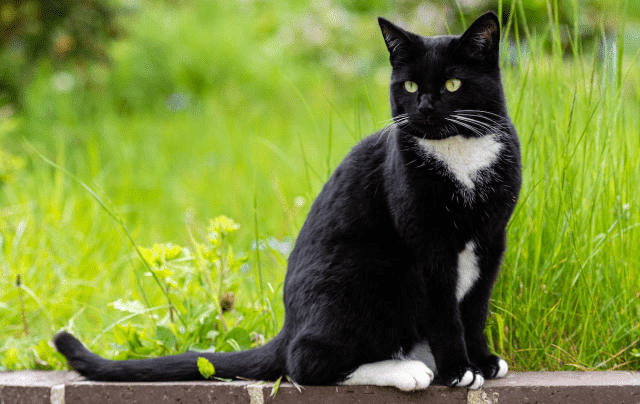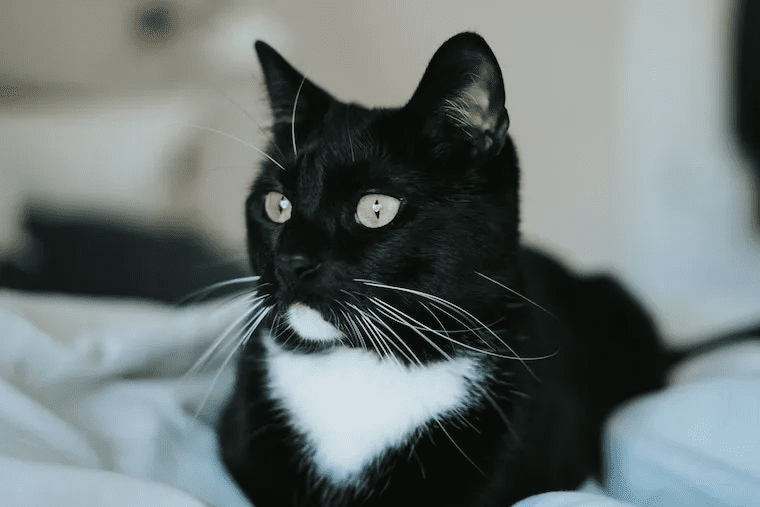The most distinctive or unique feature of tuxedo cats is their two type coats, which resemble small tuxedos. Although most tuxedo cat breeds have black and white coats, these stunning and beautiful cats can also have coats that are grey tuxedo cats (gray tuxedo cat), silver, orange, or even tortoise shell with white patches. But tuxedo cats are much more than just attractive.
Tuxedo isn’t a specific breed of cat; rather, it’s a color. However, because they exhibit this pattern more frequently than other breeds, some can be categorized as Tuxedo Cat Breeds. Unfortunately, there aren’t any cat breeds that are only black and white.
The tuxedo is, appropriately enough, a pattern on a cat’s coat. Over the past year, black and white tuxedo cats have become common in advertising, television, and movies.
Genetics determines a cat’s color pattern. There are various different color schemes or breed for tuxedo cats, all of which have names, which are as listed below in this article.
▪ Locket: only a tiny touch of white.
▪ Only a white feed with a black body, mitts.
▪ Tuxedo: the full tuxedo appearance, including a black body on the back and white feet and nose.
▪ Bicolored means having half of each color.
▪ a white cat with black patches called Magpie.
▪ Harlequin refers to a black-tailed magpie.
Knowing a little more about the tuxedo cat, the following cats belong to this breed:
1. European Short Hair Cats
The British Shorthair cat has large, golden, orange, or copper-colored eyes, a short, broad nose, and a short to medium coat. It is a medium- to large-sized cat breed. These cats require daily grooming, especially when the seasons change.
Despite their great intelligence, these adorable kittens still like playing with people and toys inside. It can be a lot of fun to play a game with your British Shorthair cat, so get some toys.
This breed are indoor cat, which are friendly and makes a wonderful companion. These cats enjoy playing, but they don’t need to be watched all the time.
2. Cymric Cats
The most famous feature of this extremely hairy breed is something it doesn’t have which is a tail. A cat with this much fur does need a lot of brushing and maintenance. But its fun nature will make up for it.
This cat has a rounded head and rounded back, making it more resemble a British Short Hair. It is obvious that their back legs are longer than their front legs.
There are many different colors available for Cymric cats, one of which is the gorgeous tuxedo design. Keep in mind that not all Cymric cats have tails, so if this is important to you, you might want to check with the breeder.
3. Maine Coon Cats
These adorable felines are definitely unique. Because of the distinctive demeanor or temperament of the Maine Coon, which is known to be a true gentle giant, they are frequently referred to as the dogs of the cat world.
Maine Coons are sociable, loving, and vocal. The state they came from, Maine, was brutally cold, yet their big physique and thick, double-layer long hair kept them well insulated and warm.
You might soon find yourself navigating, i.e. moving toward the Maine Coon breed since it has so much charming and affection to give.
Read Also: Siberian Cat (Hypoallergenic) Description and Complete Care Guide
4. Munchkin Cats
Everyone loves the cute Munchkin kitty. These various cats are very cute, with their normal-sized bodies and tiny small little legs. The sausage dog is unquestionably the canine equivalent of the munchkin because they both have stubby legs. This is the reason these tiny cats are sometimes known as sausage cats.
The Munchkin cat breed, which is often referred to as the first dwarf cat, is unique and has connections to several other breeds of cats. A Scottish fold munchkin cat or perhaps a Maine coon munchkin cat are two examples. It’s all about the DNA mutation that causes small legs.

These adorable felines are the subject of considerable debate because of worries about their possible health and mobility problems. For a long time, they were not recognized as an official breed and were prohibited from competing in feline events.
The majority of publications, however, assert that the Munchkin’s capacity for running and leaping is not affected by their tiny legs. Additionally, they do not often exhibit higher rates of joint or bone issues than other cat breeds.
Munchkin cats typically have friendly, outgoing, and intellectual personalities. They also respond nicely to handling, which is fantastic because you’ll want to cuddle with these adorable animals all day.
5. Japanese Bobtail Cats
Of course, Japan is the birthplace of this kind and lovely breed. It seems that Japanese street cats had bobtails in the 1600s. The breed is regarded as fortunate.
The most fortunate Japanese Bobtail cats are said to be tei-color, which are extremely prevalent in Japan. So you now know that you are looking at a Japanese bobtail cat when you see the well-known statue of the cat waving its paw up and down.
The breed’s small, stubby tail gave rise to the term “bobtail.” They still have a majestic air and were beloved by the Japanese Imperial family. This implies that your house and everything inside it belong to them.
6. The Norwegian Forest Cats
This is a popular breed of cat since it is Norwegian and originates from a forest. The Norwegian Forest Cat enjoys playing, but it also enjoys hanging out by itself. When you get home, these cats will not follow you around.
The Norwegian Forest Cat Breed is a larger-than-average feline kind. Their bushy tails, which are frequently as long as their bodies, and legs are long.
They are beautiful to behold after their coat has fully developed. A full fluffy chest, fuzzy legs, and even tufts of fur between their toes are frequently present as they emerge.
As a result, these affectionate cats do need grooming every day. Additionally, the tufts of fur on their ears should frequently be brushed. The Norwegian Forest Cat has two coats, one of which is waterproof.
7. Persian Cats
Persian cats are peaceful, energetic, and friendly felines. They settle down on any soft surface and just pose for you to enjoy, this breed has a calm disposition or personality. These graceful cats make the ideal indoor companion because they are not particularly active.
Persians’ large, wide eyes are normally noticeable because of their relatively flat faces. The majority of Persians have stunning blue eyes, yet there are some that have different colored eyes or exceptions.
Persian cats are affectionate, yet they are selective and only pay attention to their loved ones and a select few reliable guests. This lovely flat-faced cat breed gets well with kids and other house pets, although they prefer quiet households with little changes rather than noisy situations.
8. Turkish Angora Cats
Turkish Angora cats are renowned for having lengthy, silky coats that frequently grow to their fullest length around the cat’s neck. Large ears, almond-shaped eyes, and a small to medium-sized skull make them an appealing combination.
Blue eyes are the most typical eye color for Turkish Angora cats. However, they can also have eyes that are yellow, green, or gold. The Turkish Angora cat is thought to have originated in Turkey, as you might have guessed, and its history dates back to the 16th century. The breed, meanwhile, started to become extinct in the early 19th century.
The Turkish Angora was developed at the Ankara Zoo in order to maintain its lineage, and the breed was recognized in North America in the 1970s. These kind and sensitive cats enjoys running, jumping, and exploring.
The lively nature that this cat species displays as kittens will persist throughout their lives, it something they cannot stop. Both on the couch and in your bed, they will like cuddling up next to you and on you.
Read Also: Basepaw Cat DNA Kits Uses and Usage Guide
9. Breed of Cornish Rex Cats
The head of the Cornish Rex cat resembles a triangle. Its eyes are hence huge and prominent. Although this can vary, Cornish Rex cats typically have golden eyes.
Apart from some down, the Cornish Rex cat breed has no hair. Their extremely thin coat occasionally develops a slight curl. The absence of fur can draw even more attention to those large eyes.
Due to its sleek appearance, this cat breed is frequently compared to greyhound dogs. This breed is very adventurous, loves to explore, and will retain its lively nature even after its kittenhood is through.

